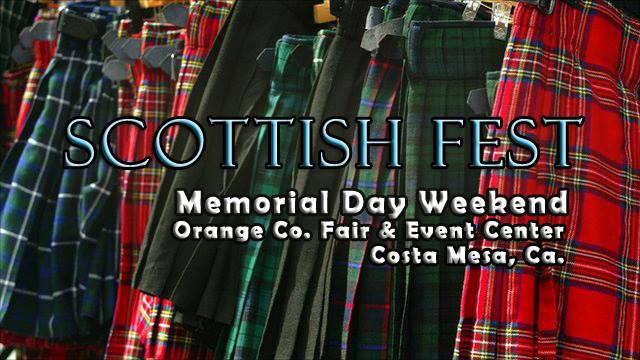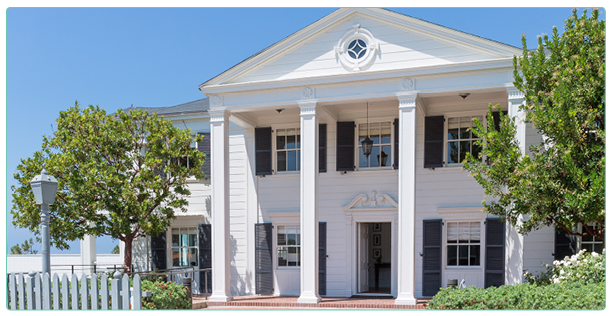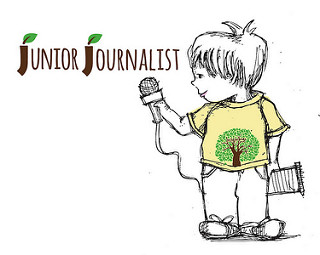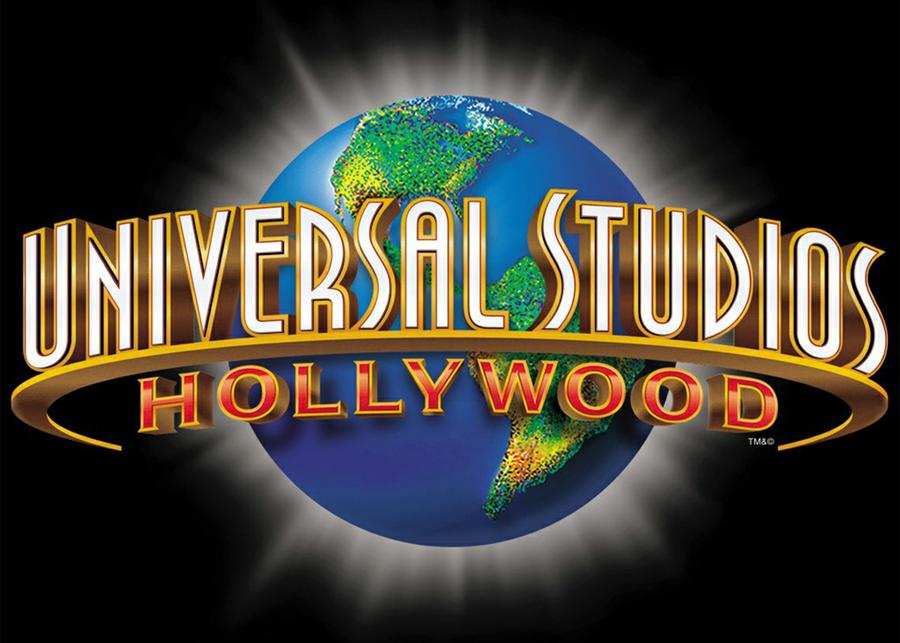
- This event has passed.
Scottish Fair and Highland Games
5/25/2019 - 5/26/2019
Event Navigation

Scottish Fest is part of the United Scottish Society, a 501c(3) non-profit corporation. It is the oldest and largest festival of its kind in the Southern California area. The festival occurs annually on Memorial Day Weekend at the Orange County Fair and Event Center (OCFEC) located in Costa Mesa, California.
The location is perfect to host the many festival activities and events not to mention the superb weather. The OCFEC is approximately 175,000 acres including the parking lots and the festival utilizes just about every inch of the property.
The key to the success of the festival is the people, from the volunteers that work to produce the event, to the participants/competitors to the guests that enjoy the many competitions, music, dance, athletics, products for sale, youth activities, food and lively atmosphere.
The festival was established in 1932 and was called a Highland Games in the tradition of Scottish heritage. The Highland Games started out as a small gathering in 1932 but as the years grew so was the Games to the point that by 1938 the Games were set-up in the Santa Monica Municipal Stadium. During 1941 to 1945 the Highland Games were not officially held due World War II.
Traditional Dances
Highland Fling
A dance of victory in battle. Traditionally, ancient warriors and clansmen performed this dance on a small round shield called a targe, which they carried into battle. One can understand the quick footwork and dexterity of the dancer when it is noted that most targes had a pinpoint-sharp spike of steel projecting some five or six inches from its center. A false or careless step could be more than a little painful.
The Seann Truibhas
Pronounced “shawn trews”, in the Gaelic language, it translates into English as “old trousers”. The dance has obscure origins; the movements definitely depict a person in the act of shedding his breeks (britches), and the tradition is that of a Highlander impatient to get rid of the unfamiliar garment and get back to the freedom of his native Highland kilt.
The Sword Dance (AKA Ghillie Calum)
No highland dance is older or better known than the Ghillie Calum, or Sword Dance.Some suggest that Malcolm Canmore, King of Scotland, who ruled the country between 1054 and 1096, created the dance. In 1054 Malcolm Canmore began the military campaign that Macbeth made famous. Malcolm, supported by the Earl of Northumbria, was able to force territorial concessions from Macbeth at the bloody battle of Dunsinane on 24 July, 1054. After the success, Malcolm is believed to have placed his own sword on top of that of his enemy in the form of a cross and danced triumphant over them.
Others suggest that warriors danced the Sword Dance the night before battle. If the dancer touched the sword, the dancer would be wounded the next day, but if a dancer kicked the sword, he would be killed.
The dance is performed today to the pipe tune Ghillie Calum with two or more slow steps followed by one or two quick steps. If a dancer touches a sword (but not displaces it in competition), the dancer loses five marks. However, if the dancer displaces the sword, s/he is disqualified
The Reel of Tulloch
There are several types of ‘group’ dances performed by Highland Dancers. They include:
1. Hullachan
2. Strathspey and Half Tulloch
3. Strathspey and Highland Reel
4. Strathspey and Highland Reel and Half Tulloch.
A Strathspey is performed by four dancers, initially beginning in a line, and dancing a ‘figure of eight’—although the formation actually uses three loops–to a suitable strathspey tune. A quicker Highland Reel (using the same formation) or Tulloch (with dancers taking turns doing steps and turning with linked arms) follows the Strathspey.
The Reel of Tulloch or Hullachan refers to a dance performed outside a cottage. This Reel is thought to have originated in the Churchyard, where on a cold winter’s Sunday a Minister was late for his service– parishioners tried to keep warm by clapping their hands and stamping their feet.
The Irish Jig
A dance which may seem somewhat out of place at a Scottish event, this jig is not popular only in Ireland. It is also popular, even traditional, in Scotland. The jig danced here, however, is meant to be a parody of an Irishman/woman in an agitated state of mind. While the steps are traditional, the arm movements are not; they are an intrinsic part of Scottish dancing, and we thus added to this jig in a humorous salute to our Celtic brethren across the Irish Sea.
The Sailor’s Hornpipe
Originally an ancient dance common in much of Britain, its name derives from the “horn pipe”, an instrument much like the modern tin flute, which accompanied the dance. In time, the dance became so popular among seafaring men that it became known as the “sailor’s hornpipe”. Now it is performed in nautical costume and imitates many typical shipboard activities such as rope hauling, climbing the shroud lines, and others.
Scottish National Dances
Blue Bonnets, Scottish Lilt, Highland Laddie, The Earl of Errol, Flora MacDonald’s Fancy and Village Maid are known as the Scottish National Dances. Attire worn by women is different than for the Traditional dances (Sword Dance, Highland Fling, etc). Dancers commonly wear a white dress with tartan plaid, or full tartan skirt, white blouse and a vest. Known as Aboyne Dress, it originated at the Aboyne Highland Games in Scotland where the wearing of the kilt and dancing of the stronger traditional dancers was strictly forbidden for women. These dances are gentler, more flowing and more graceful, but still require a lot of skill to execute correctly.









